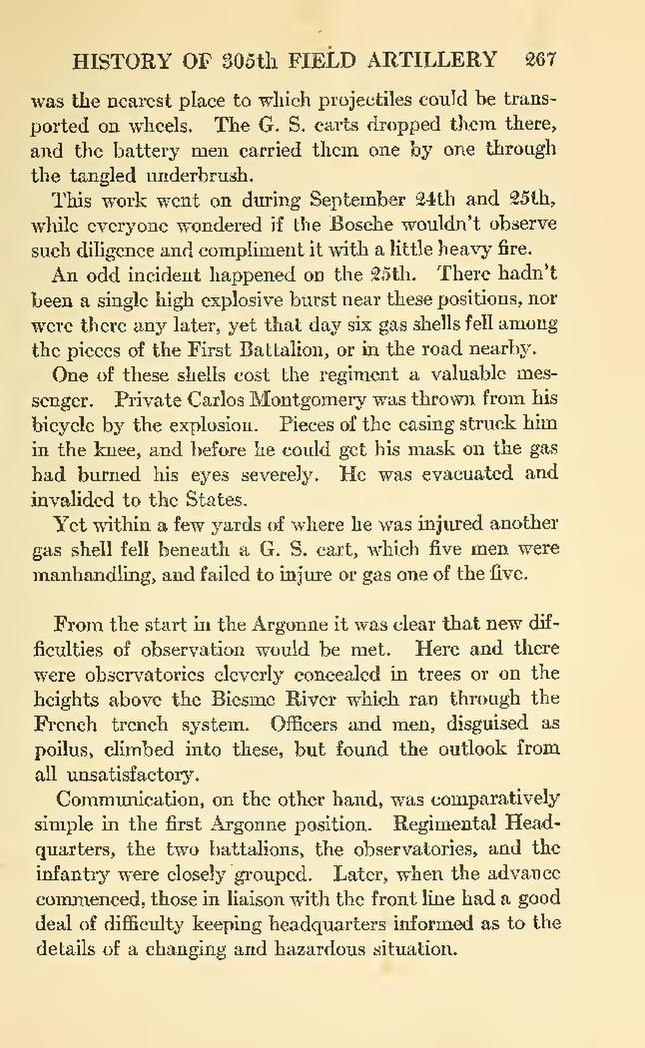was the nearest place to which projectiles could be transported on wheels. The G. S. carts dropped them there,
and the battery men carried them one by one through the tangled underbrush.
This work went on during September 24th and 25th, while everyone wondered if the Bosche wouldn't observe such diligence and compliment it with a little heavy fire. An odd incident happened on the 25th. There hadn't been a single high explosive burst near these positions, nor were there any later, yet that day six gas shells fell among the pieces of the First Battalion, or in the road nearby. One of these shells cost the regiment a valuable messenger. Private Carlos Montgomery was thrown from his bicycle by the explosion. Pieces of the casing struck him in the knee, and before he could get his mask on the gas had burned his eyes severely. He was evacuated and invalided to the States.
Yet within a few yards of where lie was injured another
gas shell fell beneath a G. S. cart, which five men were
manhandling, and failed to injure or gas one of the live.
From the start in the Argonne it was clear that new difficulties of observation would be met. Here and there
were observatories cleverly concealed in trees or on the
heights above the Biesme River which ran through the
French trench system. Officers and men, disguised as
poilus, climbed into these, but found the outlook from
all unsatisfactory.
Communication, on the other hand, was comparatively simple in the first Argonne position. Regimental Headquarters, the two battalions, the observatories, and the infantry were closely grouped. Later, when the advance commenced, those in liaison with the front line had a good deal of difficulty keeping headquarters informed as to the details of a changing and hazardous situation.
